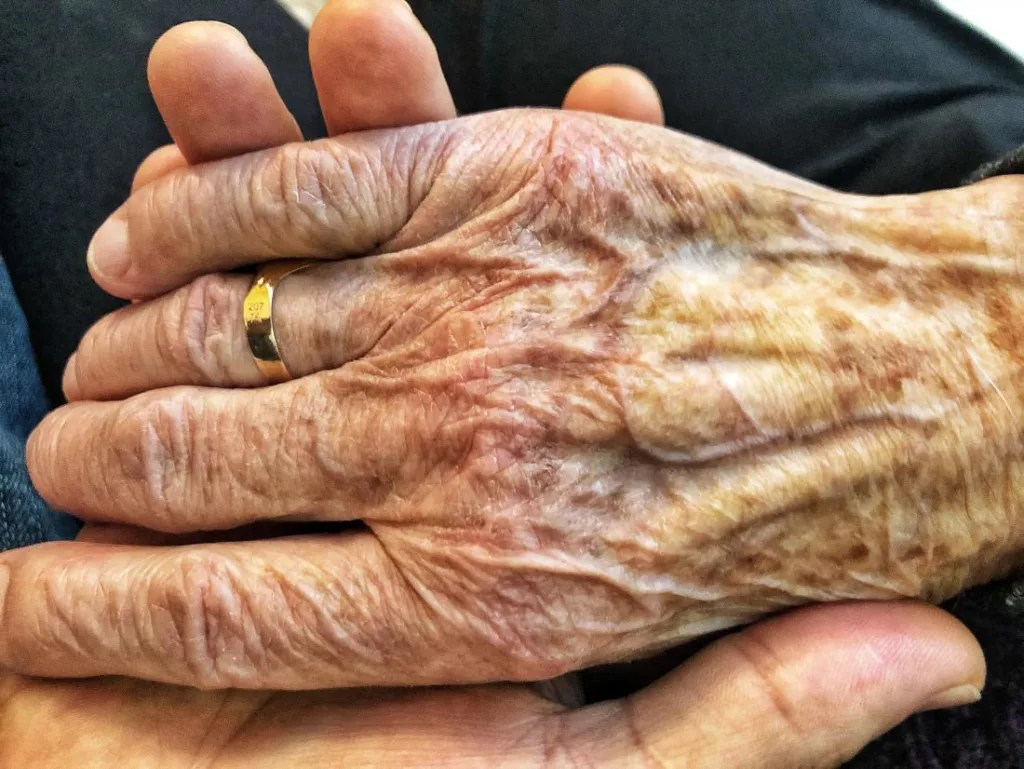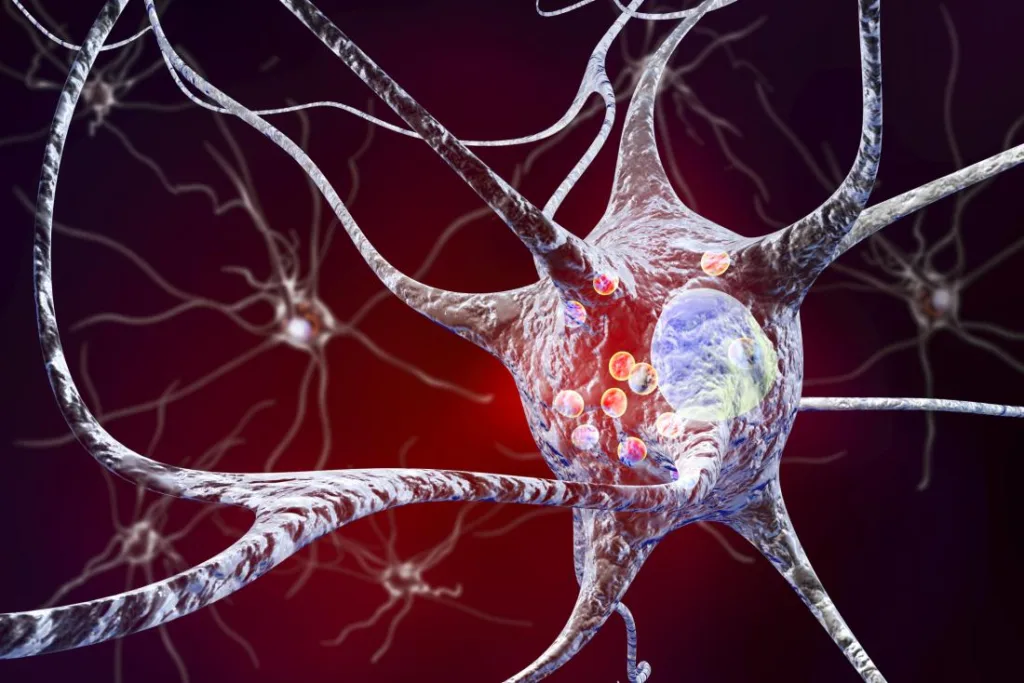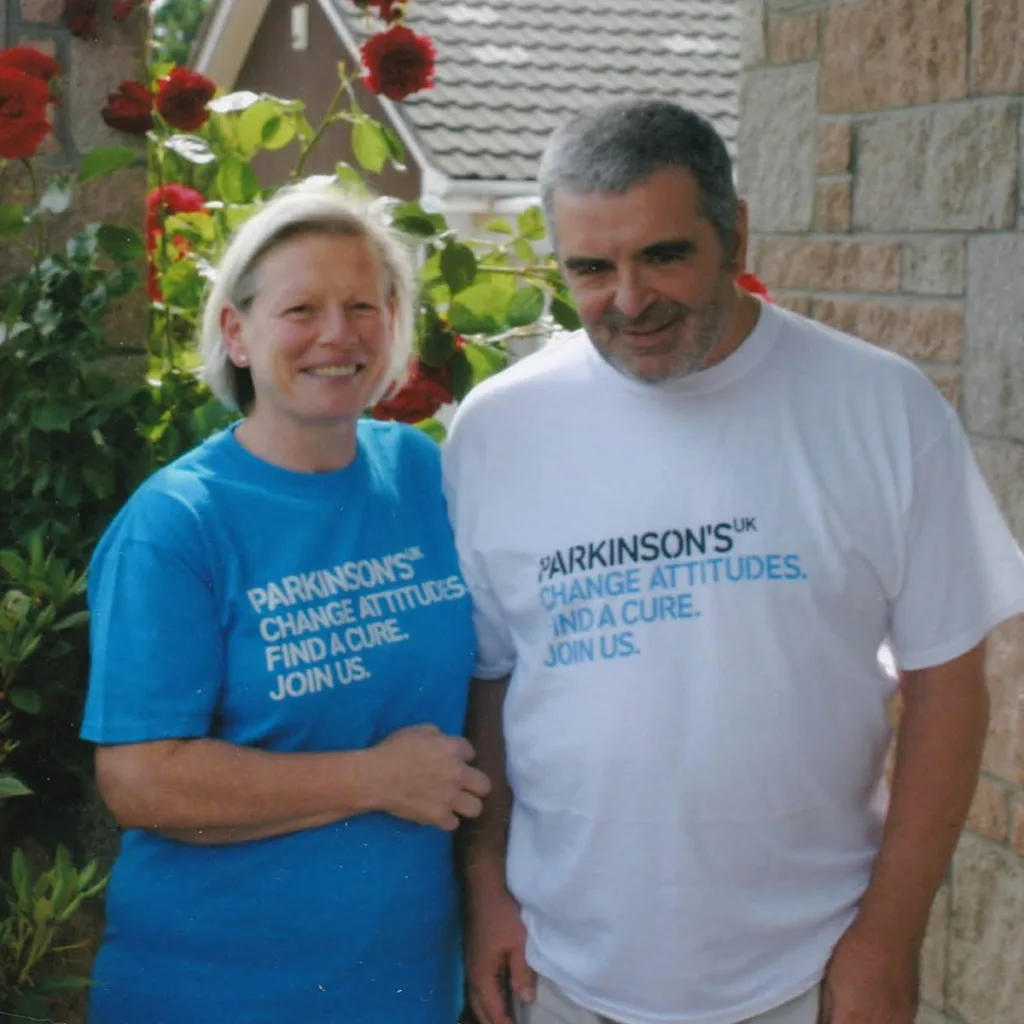Parkinson’s disease is a debilitating neurological condition that affects millions of people worldwide. It is a chronic and progressive disorder that affects the nervous system, causing tremors, stiffness, and difficulty with movement. While Parkinson’s itself is not fatal, it can greatly impact a person’s quality of life and lead to complications that may reduce life expectancy.
According to the Michael J. Fox Foundation for Parkinson’s Research, individuals with Parkinson’s may have a slightly shorter lifespan compared to healthy individuals of the same age group. Patients usually begin developing Parkinson’s symptoms around age 60, and many live between 10 and 20 years after being diagnosed. However, it is important to note that each individual’s experience with Parkinson’s is unique, and lifespan can vary greatly depending on factors such as age, overall health, and access to healthcare.
While Parkinson’s disease itself is not fatal, related complications can reduce life expectancy by 1 to 2 years. These complications can include falls and injuries due to balance and coordination issues, difficulty swallowing and eating, and increased risk of infections such as pneumonia. Additionally, some individuals may experience complications related to medication management, such as adverse reactions or interactions with other medications.
It is also important to note that the survival rate of people with Parkinson’s is highly dependent on the type of parkinsonian disorder they have. A small 2018 study found that individuals with multiple system atrophy (MSA), a rare and aggressive form of parkinsonian disorder, had a significantly shorter lifespan compared to individuals with Parkinson’s disease or other forms of parkinsonism.
However, it is important to understand that a diagnosis of Parkinson’s is not a death sentence. While the disease can greatly impact a person’s quality of life and lead to complications, there are treatments and management strategies available that can help individuals live fulfilling lives. Medications, physical therapy, and lifestyle changes such as exercise and a healthy diet can all help manage Parkinson’s symptoms and improve overall health.
While Parkinson’s disease is not fatal in and of itself, it can greatly impact a person’s quality of life and lead to complications that may reduce life expectancy. However, with proper management and a multidisciplinary approach to care, individuals with Parkinson’s can live fulfilling lives and continue to participate in the activities they enjoy. It is important to seek support and guidance from healthcare professionals and support groups to help manage the challenges of living with Parkinson’s disease.
Life Expectancy for People with Parkinson Disease
Parkinson disease is a chronic neurodegenerative disorder that affects the motor system of the body. The life expectancy of individuals with Parkinson disease varies depending on several factors such as age at diagnosis, severity of symptoms, and comorbidities. However, research suggests that individuals with PD may have a slightly shorter life span compared to healthy individuals of the same age group. According to the Michael J. Fox Foundation for Parkinson’s Research, patients usually begin developing Parkinson’s symptoms around age 60 and many live between 10 and 20 years after being diagnosed. It is important to note that with proper treatment and management of symptoms, individuals with Parkinson disease can lead a fulfilling life for many years. Therefore, it is crucial to seek medical attention if one suspects they may have Parkinson disease, as early diagnosis and treatment can help improve quality of life and prolong life expectancy.

End Stages of Parkinson’s Disease
Parkinson’s disease is a progressive neurological disorder that affects movement and other body functions of a person. The end stages of Parkinson’s refer to the advanced stage of the disease when the symptoms have progressed significantly, and the person’s ability to perform everyday tasks is severely impacted.
Some of the common symptoms of end-stage Parkinson’s include a softer voice that trails off while speaking, difficulty in swallowing, and changes in speech patterns. The person may also experience falls and trouble with balance and coordination, which can cause severe injuries. They may also have freezing episodes, which is a sudden and temporary inability to move when starting to walk or change direction.
As the disease progresses, the person may require assistance in moving or may become wheelchair-bound. They may also experience significant cognitive changes, including dementia, hallucinations, and delusions. Incontinence and other urinary problems may also occur in the end stages of Parkinson’s.
It is essential to note that not all people with Parkinson’s disease will experience all of thse symptoms in the end stages. The severity and progression of the disease can vary from person to person. It is crucial to work closely with a healthcare professional to manage the symptoms and provide the best possible quality of life for the person with Parkinson’s disease.
The Impact of Parkinson’s Disease on Life Expectancy
Parkinson’s disease itslf is not typically fatal, meaning that individuals with the condition can live for many years after diagnosis. However, related complications can reduce life expectancy by 1 to 2 years, on average. These complications may include falls, infections, and other health issues that can arise as a result of the motor and non-motor symptoms of Parkinson’s disease.
It is important to note that the survival rate of individuals with Parkinson’s can vary depending on the type of parkinsonian disorder they have. A small 2018 study found that the survival rate of people with Parkinson’s is highly dependent on the specific form of the disease they are experiencing. In general, it is recommended that individuals with Parkinson’s work closely with their healthcare providers to manage their symptoms and minimize their risk of complications, which can help to improve their overall quality of life and potentially extend their life expectancy.
The Fatal Nature of Parkinson’s Disease
Parkinson’s disease is a chronic and progressive neurological disorder that affects the movement of the body. While it is a serious condition that can significantly impact a person’s quality of life, it is not usually fatal. Parkinson’s disease is not a direct case of death, unlike other conditions such as heart attack or stroke. However, complications from Parkinson’s, such as pneumonia or falls, can lead to life-threatening situations. Additionally, some people with Parkinson’s may develop other conditions, such as dementia, that can increase the risk of mortality. However, with appropriate medical care and management of symptoms, many people with Parkinson’s can live for many years after their diagnosis. It is important for individuals with Parkinson’s to work closely with their healthcare team to manage their condition and address any potential complications.
Possible Causes of Parkinson’s Disease
Parkinson’s disease is a complex neurodegenerative disorder that is lkely caused by a combination of genetic and environmental factors. While genetics can play a role in some cases, the majority of people with Parkinson’s do not have a family history of the disease. Researchers believe that environmental factors, such as exposure to toxins, can trigger the onset of Parkinson’s in individuals who are genetically susceptible. Therefore, the two likely causes of Parkinson’s disease are a combination of genetic factors and exposure to environmental toxins. However, more research is needed to fully understand the complex interplay between genetics and environmental factors in the development of Parkinson’s disease.

Living with Parkinson’s: Can I Lead a Normal Life?
It is possible for individuals with Parkinson’s disease to live a normal life. While Parkinson’s can be a debilitating condition, modern treatments and medications can help manage symptoms and reduce the occurrence of complications. Many individuals with Parkinson’s are able to maintain their independence, continue working, and enjoy hobbies and activities they love. Additionally, support from family, friends, and healthcare professionals can make a significant difference in maintaining a high quality of life. It’s important to work closely with a healthcare team to develop a personalized treatment plan that addresses the specific needs and challenges of each individual with Parkinson’s. With proper management and support, it’s possible to live a fulfilling and enjoyable life with Parkinson’s disease.
The Rapid Progression of Parkinson’s Disease
Parkinson’s disease is a progressive neurological disorder that affects the dopamine-producing neurons in the brain. While the disease does worsen over time, the rate of deterioration can vary significantly among individuals. Some people may experience a rapid decline in motor function, while others may have a slower progression. Generally, Parkinson’s symptoms change slowly, with substantive progression taking place over the space of many months or years. However, in some cases, Parkinson’s can deteriorate quickly, particularly in older adults or those with oher medical conditions. The speed of deterioration can also depend on the stage of the disease, with advanced stages typically experiencing more rapid progression. Therefore, it is important to regularly monitor the disease and work closely with healthcare professionals to manage symptoms and optimize treatment plans.
Can Progression of Parkinson’s Disease Be Halted?
Research suggests that while thee is no known cure for Parkinson’s disease, certain lifestyle changes and medical treatments may slow its progression. For instance, regular exercise, such as strength training and aerobic exercises, may help delay the worsening of symptoms. Medications can also help manage symptoms and slow the progression of the disease. Additionally, recent studies have shown that targeted nutrition, such as following a whole-food, plant-based, Mediterranean-style diet, may be linked to slower Parkinson’s progression. It is important to consult with a healthcare professional for personalized recommendations and treatment options.
The Most Common Cause of Death in Parkinson’s Patients
The most common cuse of death in Parkinson’s patients is often attributed to complications related to falls and pneumonia. Parkinson’s disease can cause mobility issues, making individuals with PD more prone to falls which can lead to serious injuries and subsequent infections. Additionally, individuals with PD may have weakened immune systems and difficulty swallowing, which can make them more susceptible to developing pneumonia. These complications can be particularly severe for older individuals or those with advanced stages of PD. It is important for individuals with PD to work closely with their healthcare providers to manage their symptoms and reduce their risk of falls and infections.

The Five Stages of Parkinson’s Disease
Parkinson’s disease is a progressive neurological disorder that affects movement. The stages of Parkinson’s disease are typically classified using a system called the Hoehn and Yahr scale, which ranges from stage 1 (mild symptoms) to stage 5 (severe symptoms).
The five stages of Parkinson’s disease are:
Stage 1: In this stage, symptoms are mild and may only affect one side of the body. Tremors or shaking may be present, but they are usually mild and do not interfere with daily activities. The person may also experience slight changes in posture, balance, and facial expressions.
Stage 2: As the disease progresses, symptoms become more noticeable and may affect both sides of the body. Tremors and other movement problems may become more pronounced, and the person may have difficulty with balance and coordination. Daily activities may become more challenging, but the person can sill live independently.
Stage 3: In this stage, symptoms become more severe and may include impaired balance and coordination, making it difficult to walk or perform routine activities. Falls may become more frequent, and the person may experience a slower reaction time. Despite these challenges, the person can still live independently with some assistance.
Stage 4: At this stage, symptoms are severe and the person may require a wheelchair or other mobility aid to get around. Daily activities may be very difficult, and the person may require assistance with basic tasks such as dressing and bathing.
Stage 5: In the final stage of Parkinson’s disease, the person is completely dependent on others for daily care. They may be unable to stand or walk, and may require assistance with all activities of daily living. Communication may also be difficult, and the person may experience cognitive decline.
It’s important to note that not everyone with Parkinson’s disease will experience all of these symptoms, and the progression of the disease can vary from person to person. However, understanding the stages of Parkinson’s can help individuals and their caregivers plan for the future and access appropriate care and support.
The Relationship Between Parkinson’s Disease and Dementia
Parkinson’s disease can cause dementia. While physical symptoms such as tremors and stiffness are often the first signs of Parkinson’s, problems with cognitive function may arise later. As the disease progresses, many people with Parkinson’s develop dementia, whch can include memory loss, difficulty with language and communication, and changes in mood and behavior. The risk of developing dementia increases with age and the duration of Parkinson’s disease. It is important for individuals with Parkinson’s disease and their caregivers to be aware of the potential for cognitive decline and to work with healthcare providers to develop a plan for managing symptoms and providing appropriate care.
Signs of Worsening Parkinson’s Disease
As Parkinson’s disease progresses, the signs and symptoms become more pronounced and may affect both sides of the body. The most common signs that Parkinson’s is getting worse include tremors, rigidity, and other movement symptoms that can affect the neck, trunk, and limbs. The person may have difficulty with balance and walking, and poor posture may become more apparent. Daily tasks may become more challenging and take longer to complete, but the person is still usually able to live independently. Other signs that Parkinson’s is getting worse may include difficulty with speech and swallowing, increased fatigue, and changs in mood or behavior. It’s important for individuals with Parkinson’s to work closely with their healthcare team to manage their symptoms and adjust their treatment plan as needed.
The Impact of Parkinson’s Disease on Pain
Parkinson’s disease can case pain. Pain is a common symptom of Parkinson’s disease, which can be caused by rigidity or dystonia. Rigidity is stiffness and resistance to movement, which can cause discomfort and pain. Dystonia is a condition that causes muscle contractions that result in twisting and repetitive movements, which can also lead to pain. Additionally, Parkinson’s medications can cause side effects like dyskinesias, which can also cause pain. Fortunately, pain caused by Parkinson’s symptoms can be relieved by various treatments such as Parkinson’s medications, exercise, deep brain stimulation (DBS), and botox injections. Therefore, it is important for people with Parkinson’s disease to consult their healthcare provider to manage their pain effectively.

The Duration of End Stage Parkinson’s Disease
Parkinson’s disease is a progressive neurological disorder that affects movement. As the disease progresses, the symptoms become more severe, and the patient’s quality of life may deteriorate. However, thre is no set timeline for the final stage of Parkinson’s disease, as it varies from person to person.
In the final stage of Parkinson’s disease, also known as the end stage, patients may experience severe motor symptoms, including tremors, rigidity, and difficulty with walking and balance. They may also experience non-motor symptoms, such as cognitive impairment, depression, and anxiety.
During the end stage of Parkinson’s disease, patients may require 24-hour care and assistance with daily activities, such as bathing, dressing, and eating. Hospice care is often recommended for patients in the end stage of Parkinson’s disease, as it provides specialized care and support for patients and their families.
It’s important to note that the end stage of Parkinson’s disease is not a set time period and can vary depending on the individual. Some patients may experience a rapid decline, while others may remain stable for an extended period before experiencing a decline. Therefore, it’s essential to work closely with healthcare providers and hospice teams to ensure that patients receive the best possible care and support during this difficult time.
Conclusion
Parkinson’s disease is a progressive disorder that affects the nerve cells in the brain, causing a range of motor and non-motor symptoms. While the disease itself is not fatal, complications associated with the disease can reduce life expectancy by 1 to 2 years. However, it is important to note that a diagnosis of Parkinson’s is not a death sentence. With proper treatment and management of symptoms, many individuals with Parkinson’s can live a full and meaningful life. Therefore, it is crucial to seek medical attention as soon as symptoms arise, in order to receive appropriate care and support.
